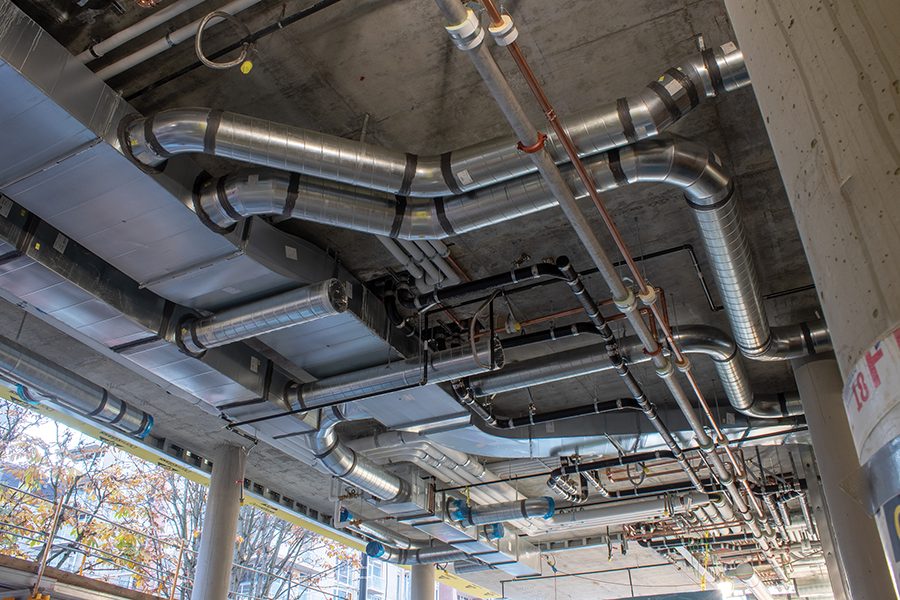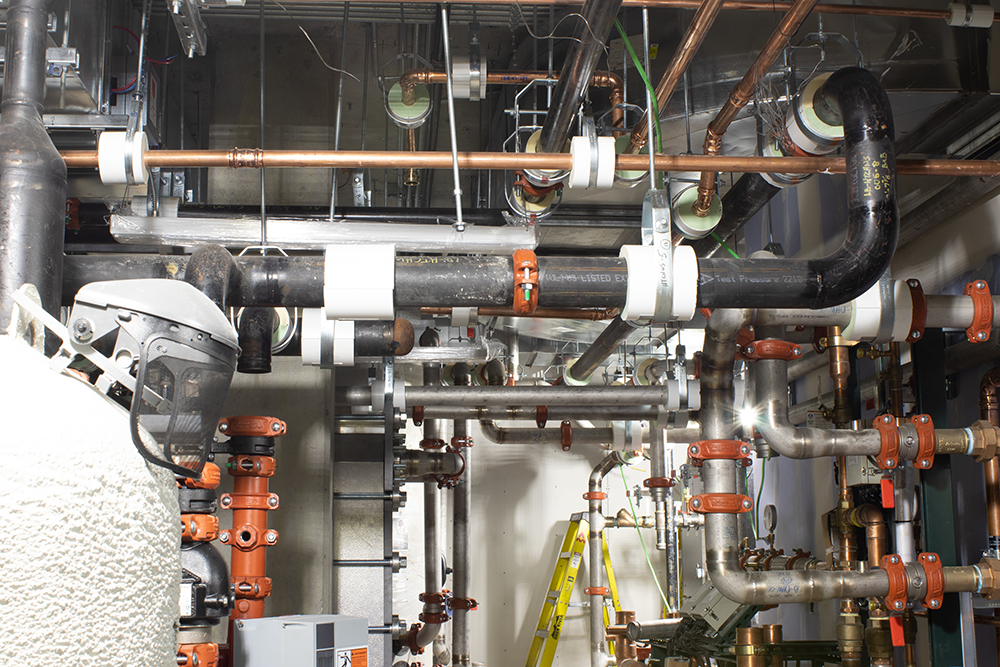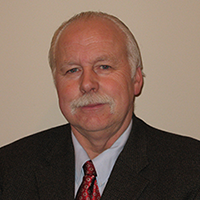
Reprinted with permission from Partners in Progress magazine February 2019 issue. Visit www.pinpmag.com for back issues and more information on this jointly-funded partnership.
Seattle’s South Lake Union district, better known among locals as SLU, is headquarters to cutting edge businesses like Starbucks and Amazon. It makes sense that any new hotel in SLU should be cutting edge too, which is why Dutch firm CitizenM is creating Seattle’s first lodgings built in a modular fashion, intended for guests who are tech-savvy and prefer urban, contemporary settings.
The lobby, offices, and infrastructure of the 264-room CitizenM Seattle South Lake Union hotel were built traditionally by Mortenson Construction, but the hotel rooms were prefabricated in Poland, shipped to Seattle, and are being stacked by crane on top of one another.
This type of construction is endemic to CitizenM projects around the world because it means speed-to-market and early revenue (projects can be delivered in up to half the time of regular construction, in addition to requiring 90 percent fewer vehicle movements to and from the construction site); and in Seattle the job was facilitated by a fruitful collaboration between Auburn Mechanical and Local 66.
Jim Reynolds, vice president, HVAC design & construction for Auburn, explains, “We relied on Local 66’s skilled detailers throughout the design stage to help turn our shop drawings into construction documents.”
He points out that this was crucial to the expediency of the stacking process, since each prefabricated hotel suite was outfitted in Poland with utilities that had to be connected to the new hotel infrastructure in Seattle. Reynolds goes on to note that Citizen M sought Auburn to provide value engineering, constructability input, and pricing.
“We made sure to involve the detailers from day one of the design process,” Reynolds says. “All of us sat down with the project manager, combed through the drawings and filled in gaps as they appeared, and gave our input back to the engineers—a process that lasted about nine months.”
One of the biggest challenges of the new CitizenM hotel from Auburn’s perspective was deciding the most efficient way to get outside air into the hotel and inside air out, because there would be six levels of stacked modules on top of a ground level lobby, a food service canteen, and a basement full of mechanical components.

“We had to take great care deciding where to go with the shafts and eventually decided to work from the top of the building down,” Reynolds says.
It should be noted that every pair of rooms on each level of the hotel would be a reverse image of the other, and the HVAC shafts, plumbing, electrical, and other utilities would be run in between the room pairs, which worked out to 44 rooms per floor and 22 shafts.
The successful design collaboration was especially fulfilling, given a recent CitizenM hotel project in New York City that had the modular component but minus the off-site installation of utilities. “Everything was done on site, and the project became very labor intensive and expensive,” Reyolds says.
CitizenM’s devotion to modular design was enthusiastically embraced by Mortenson, whose general manager, Phil Greany, pointed out last year as the company was preparing for an August start to the stacking process, “It solves the specific regional issues we are facing in skilled labor shortages, capacity/backlog of the local subcontractors and suppliers, and the logistical nightmare created on our streets, with projects on what seems like every block.”
The modular division of Poland’s Polcom Group was tasked with the fabrication of the Seattle hotel units, based on its experience working with CitizenM in New York and other international locations. Full-time inspectors presided over construction of the 264 suites, which began with the formation of steel cages. The completed modules were wrapped in an air and water barrier that would remain in place when the units were stacked on top of each other on-site, and then shipped to Seattle, a four-week journey. “Essentially, all we have to do on-site is hook everything up,” says Reynolds.
As of February the stacking process continued on time and on budget. “Seattle has always been an early adopter of different building concepts, and prefab modular is one of them,” Reynolds says. “But for me, this project was also an opportunity to continue the bridge-building between SMACNA and SMART that began when we reached our six year agreement.”
Modular building, is just one evolving technology bringing a new face to the sheet metal industry, and Local 66 keeps a key eye on regional trends that help shape its programming. “Technology is an ever moving target and as a Local union we are dedicated to staying in front of these technologies in order to provide a trained workforce to signatory contractors,” Business Manager for Local 66 Tim Carter, says.
Reynolds says he believes there is a place for modular construction, especially in the hotel and residential marketplace. Auburn is scheduled to do a second CitizenM hotel in Seattle that will not be modular because its high-rise classification is not compatible with CitizenM’s current modular design.

“It will be very interesting to compare pricing and labor efficiency on these two projects, since they are very similar except for the high-rise provisions,” Reynolds says.
The biggest risks to the modular construction model are the modular manufacturer’s quality control, shipping and protection of the modules, and high quality 3D modeling—the latter being the place SMACNA and SMART partnerships have the most control and can bring the most value to the modular concept.
“This is where our highly trained labor partners make a significant contribution, converting the engineers documents to constructible 3D fabrication documents,” Reynolds says. “It is also where we bring the opportunity for modular design and fabrication—specifically prefabrication—to the infrastructure outside of the room modules, meaning the chilled and hot water piping, domestic waste water, and venting and the electrical distribution.”

This last item is where previous projects have fallen short, and was a major contributing factor to Auburn Mechanical being selected for the projects, Reynolds adds.
Johnson says the relationship between the Local and Auburn—Reynolds in particular—was a key factor in the project’s success. “[He] is a very fair and open person to work with on the management side,” says Johnson. “Our senior managers have a lot of respect for him. I know that for those of us who swing the hammers we’re all grown up and don’t need an ‘atta boy’ from anyone, but in reality we like a good word here and there, and that’s the kind of support we get from Auburn.”
By Natalie Bruckner
Photos courtesy of Auburn Mechanical



